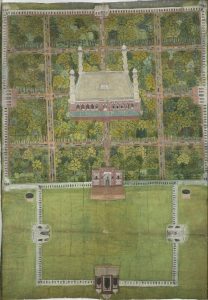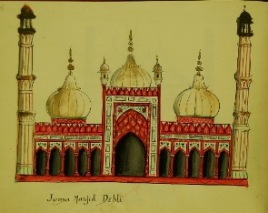Happy New Year
May I start this blogpost by wishing all its readers a very happy New Year. A new year is often a time of looking back and looking forward. Coming back to work, I was reminded of some of the many achievements of 2017 as I needed to write an Archive Report for the Library Committee next week. We’ve welcomed many researchers, handled even more enquiries, seen archives listed and catalogued, photographs and glass slides repackaged and catalogued, books and pamphlets also catalogued, items lent to other exhibitions, our first digitised manuscripts, volunteers and interns trained in the care of primary resources. A snapshot of life in the Reading Room, and the Society too has hosted many lectures and events including two popular Collections Open Evenings.
Also coming back, there were the inevitable emails to sort through, some of them easily dispatched. But some contained enquiries, one of which took me back to the first set of Papers that I catalogued on to Archives Hub – those of John Drew Bate, a missionary who wrote a Hindi-English dictionary which was used in many Indian schools. The enquiry concerned an handwritten article in the Papers about Hindi music. The researcher is working on Beatrice Bate, the wife of John Drew, who wrote, among other things, about Hindi music. And when I sent scans of the article to him, the question came back as to whether I knew for certain that the material belonged to John Drew as it replicated some of the material that Beatrice had written. On the individual article there are no identifiers, so when I have written this blog, I will be headed down to the strongroom to bring up all the Bate Papers to see if, by handwriting or other clues, it might be decided whether the work is Beatrice’s or John Drew’s. So a new year potentially brings new things to light about our archives.
New year – new things, or commemoration of new things. On this day (January 5th) in 1592, Shahab-ud-din Muhammad Khurram was born. He became the fifth Mughal emperor, Shah Jahan, reigning from 1628 to 1658, after the death of his father, Jahangir.

Shah Jahan’s reign was marked as one in which great buildings were erected in the Mughal empire including the tomb of Jahangir, the construction of which was supervised by Shah Jahan’s stepmother, Nur Jahan.

Shah Jahan is most famously known for the Taj Mahal built for his wife, the empress Mumtaz Mahal. The building took twenty years to complete and was constructed from white marble underlaid with brick.

The album bequeathed by Henry Fanshawe also has drawings showing some of the other buildings that were constructed in Shah Jahan’s reign:


Shah Jahan also oversaw the construction of the Red Fort (Lal Qila) at Delhi. In our collections is a magnificent panorama of this fort, dating to c.1810, and measuring 23cm x 246cm.. Unfortunately we haven’t got a photograph that does justice to the picture – so I will have to encourage you to make a trip to the RAS in 2018 to see it.
And while I’m encouraging you to visit the RAS, may I invite you to attend the first lecture of 2018. On Thursday 11th January at 6.30 pm, Professor Christopher Fuller from the London School of Economics will lecture on “Modern Science and the Pre-Disciplinary Development of Colonial Anthropology”. We hope that many of you will join us for this event.
